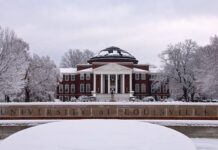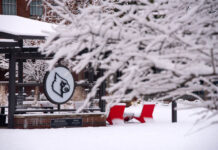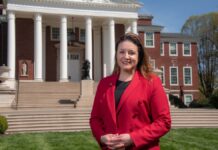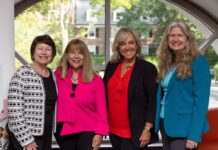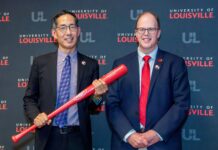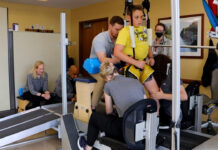The building has received a Gold LEED (Leadership in Energy and Environmental Design) certification, one of the council’s highest designations.
Only 33 research buildings in the United States have earned the same certification, and UofL’s eight-level, 288,000-square-foot building at 505 S. Hancock St. is believed to be the largest, said Stephen Cotton, assistant director of university planning, design and construction.
The use of energy-saving natural light was a key factor in designing the $143 million, state-funded biomedical research facility, which opened in October. A reflective roof keeps down heating costs while special louvers and light shelves control the amount of sun entering the building. Another system in the building turns off electric lights when they aren’t being used.
Condensed water from the air conditioner is used to irrigate the building’s landscaping, and built-in showers and bicycle racks make it easier for employees to avoid driving to work.
UofL is pursuing LEED certification for three other projects, the renovations of its dental school and Duthie Center for Engineering and construction of its Level 3 biosafety lab at ShelbyHurst.
“Not long ago, we promised that UofL would become a sustainability leader,” said UofL President James Ramsey. “It’s rewarding to get verification from the nation’s most respected green building organization that we’re moving in the right direction.”
The U.S. Green Building Council established the LEED rating system in 2000. Businesses, schools, government agencies, stores and homes can apply for certification through the program, but must meet strict criteria before they can qualify for a certified, silver, gold or platinum rating.
UofL’s building earned a total of 41 LEED credits, two more than the 39 credits needed to achieve a Gold rating, Cotton said.












